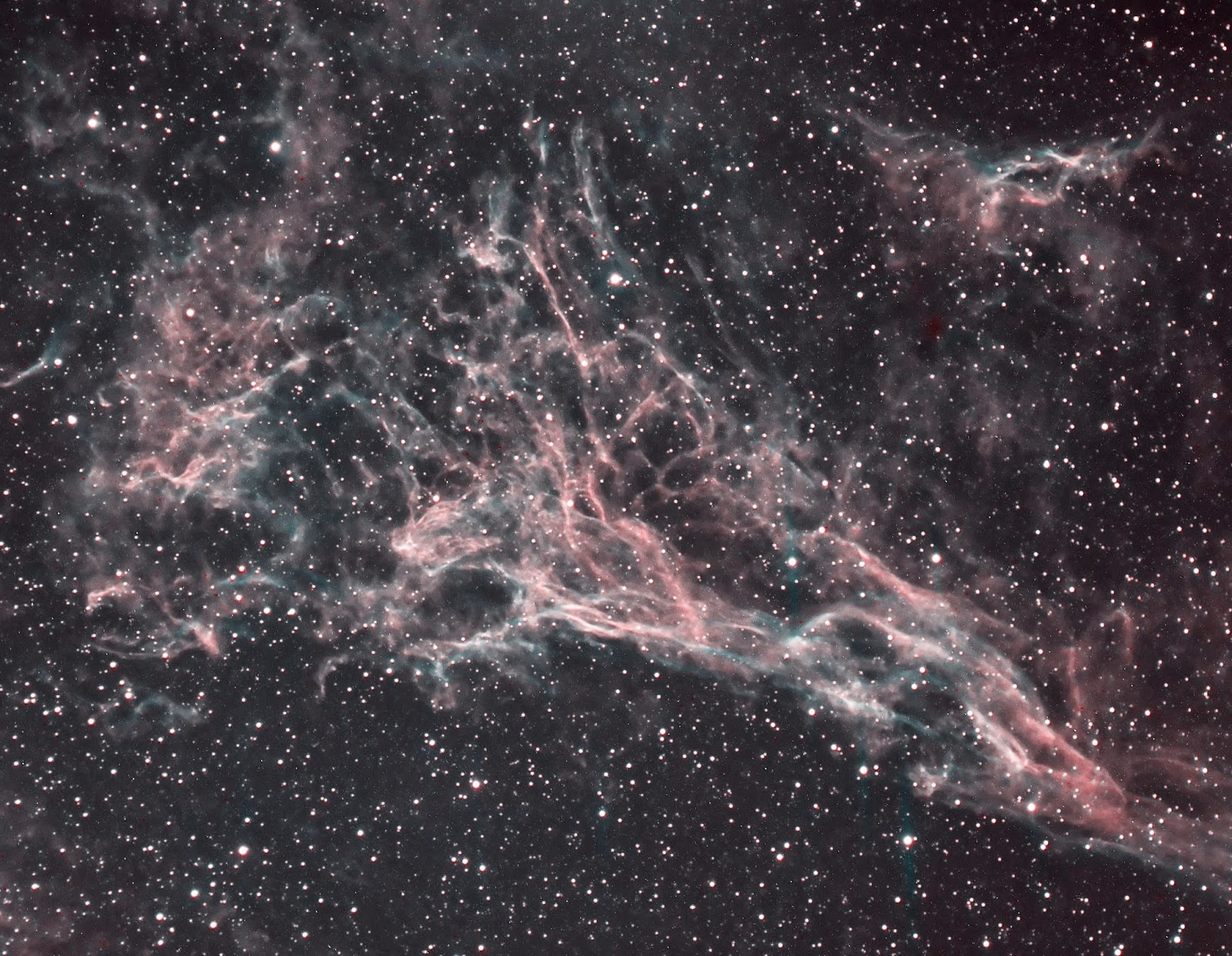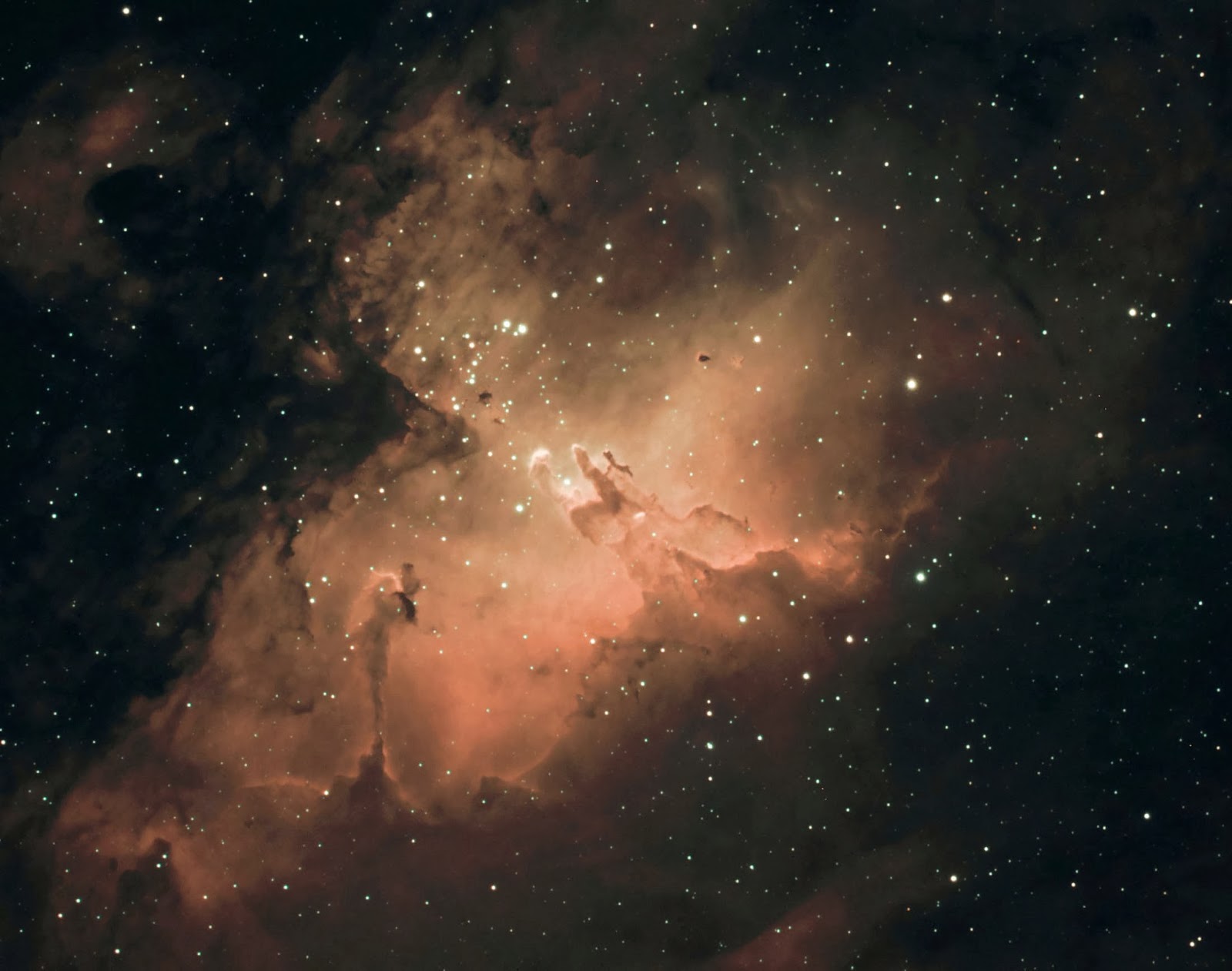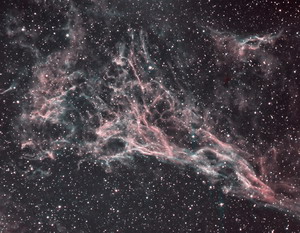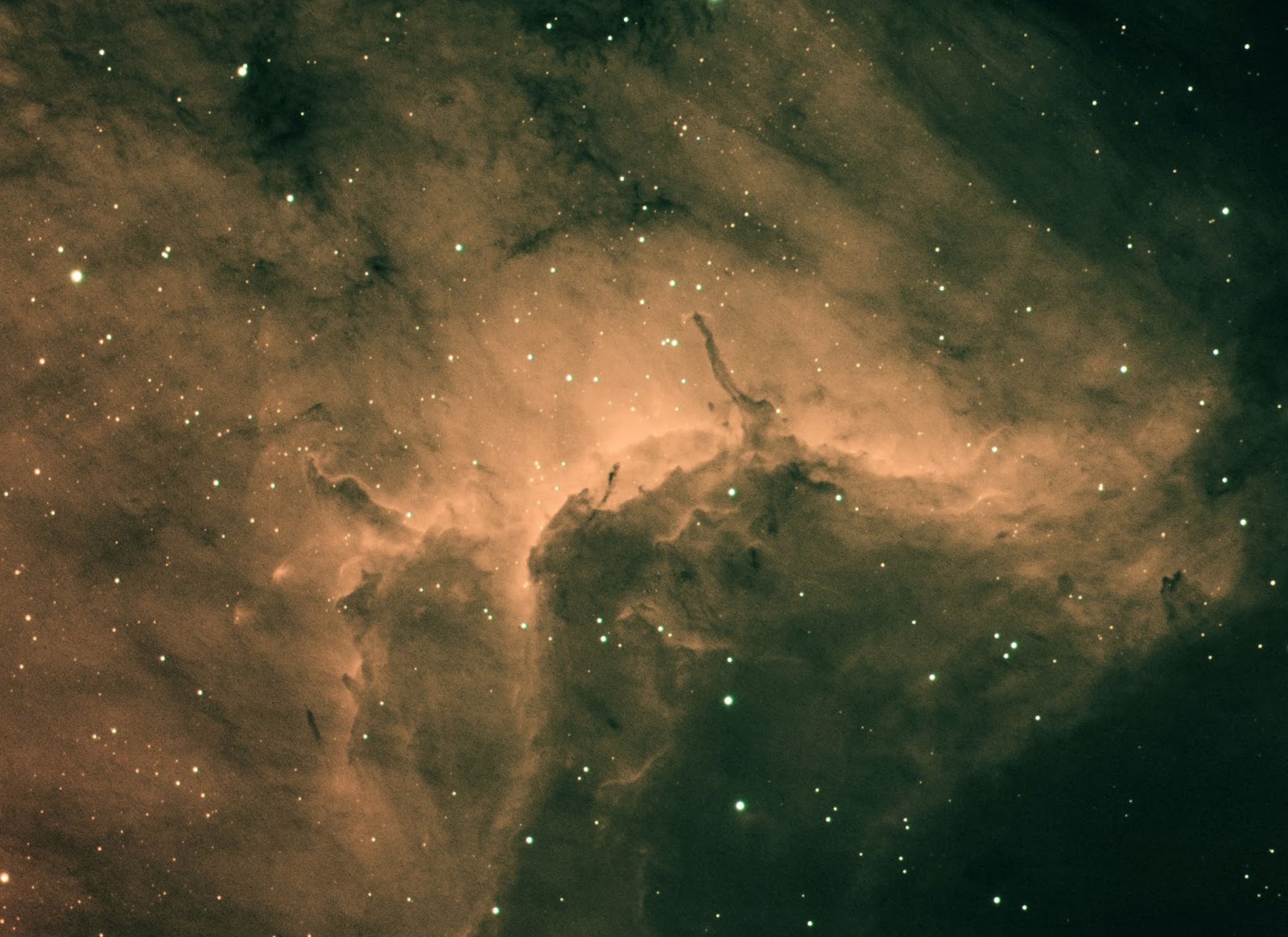Possiedo una montatura Linear della Avalon, una delle primissime credo, da poco più di un anno e da allora la uso ininterrottamente. Ci ho fatto più di 30 serate, quasi tutte nella mia postazione fissa nelle Marche, a 500m di altezza, a NW di Ascoli Piceno. Naturalmente non mi è capitata per le mani per caso, anzi, sono stato in qualche modo partecipe o perlomeno testimone del suo stesso concepimento e soprattutto della sua caratteristica di progetto che era soprattutto: guida morbida e stabile, più delle montature tradizionali, grazie alla trazione di cinghie e pulegge.
Per il resto, naturalmente, un Go-To preciso e affidabile e anche, perché no, eleganza estetica tutta italiana. Bene cominciamo dalla fine. Bella è senza dubbio col suo colore Ferrari, precisa nel Go-To è, senza dubbio, ho fatto molte volte 30-40° con un pesante specchio di 3 metri di focale, mettendo la stella di arrivo al centro o giù di lì.
Ma la guida stabile e sicura, protetta dai bruschi sbalzi autogenerati dal sistema stesso di inseguimento e trasmissione, si è confermata la sua grande caratteristica. Non ricordo più quante pose buttavo prima per i mossi, ora ho fatto un calcolo su oltre mille pose, tutte lunghe, e la percentuale di scarti per mosso sta intorno al 4-5 %, niente per i miei standard. Un esempio per tutti, fresco della scorsa luna di luglio: 48 pose da 30 minuti con lo ZEN 250, f/12 e quasi 20 kg di carico totale: nessun mosso! Guardate sul mio Blog!
Veil Nebula - NGC 6960
Mount: Linear Fast Reverse
Lens: Astrophysics Starfire 130 f/6
CCD SHVR-H694: with MZ5 in GFA
Exposure: 6x15m Ha+3x15m RGB
Guide: PHD – Acquisition: Nebulosity
Post Production: Photoshop
Location: Monsampietro (AP) (42°54’ N/13°30’ E) mt 500asl - August 2014
 Eagle Nebula - M16
Eagle Nebula - M16
Mount: Linear
Lens: TEC f/7 – CCD SXVR-H694 – Off-axis guide with MZ5
Exposure: 12x10m bin1 Ha/OIII/SII + 6x10m bin2 R/G/B
Acquisition: Nebulosity
Processing: Photoshop
Location: Monsanpietro (AP), September 2013
Notes
Here is another version of the Eagle Nebula, obtained with narrow band exposures in the HHOO combination, where the natural red of the nebula is enhanced by the hydrogen line, while the oxygen is balanced between its native components, green and blue, indeed.
Now it resembles much more to the many and many pictures of M16, obtained via the OSC cameras in factory-calibrated and perhaps the magic bright window into the dark clouds is well highlighted.
 Pelican - IC5070
Pelican - IC5070
Lens: TEC f/7 – CCD SXVR-H694 – Off-axis guide with MZ5
Mount: Avalon Linear
Exposure: 8x15m bin1 Ha/OIII/SII
Acquisition: Nebulosity
Processing: Photoshop
Location: Monsanpietro (AP), September 2013
Notes
Since I have found this object by chance, I didn’t even know whether it was catalogued. It is, in the Herbig-Haro catalogue, as HH555, you can find a detailed description in HH 555, a Herbig-Haro object in the Pelican Nebula | Anne's Astronomy News.
Let me catch the opportunity to come again on the topic of colours. In fact, another way to colour a B/W image, either pure luminance or Ha, is that of picking the colours other shots of the same object, also if taken with a different telescope or another camera, or even pictured by others, with their permission of course, although this way implies a kind of loss of property and of personal satisfaction, like when leasing time by a remote observatory.
In this case I have used my own exposures of the same object taken with my Vixen Visac and the Q8 camera, published here at the end of last September. Being not so familiar with such technique, which I heard to be highly performing, I had to work hard to size the same format, cropping pixel by pixel with Nebulosity, while no problems arose for the difference between the pixel size, 4.5µ of the Starlight vs 7.8µ of the Q8, that’s not nothing !!
The colours were not so good, because the sky was somehow dirty, as I said at that time, but, confirming that the colours are less relevant than the total luminance, the results enjoy the good quality of the present Ha.
I have managed several combinations with respect to the basic HRGB, the best one resulting the HHGB, because, I said to myself, the object is red, as it comes out from an OSC camera, but since the first red I have is bad and the present is weak, let’s put the hydrogen again as red, so I gain a benefit in both intensity and resolution.
As you can see, in fact, the HHGB version has a better quality and resolution with respect to the previous HRGB obtained separating the colour components in the Q8. Details are better, as well as the noiseless background, despite of the light green tone on the sides of the hills.
With the present issue, the latest, I promise, I like to properly celebrate the newborn Marco, the first son of Carmen, my favourite violinist, just because that funny pillar recalls much more a boy than a girl!
Location: Roma
E-mail: This email address is being protected from spambots. You need JavaScript enabled to view it.
Go to WebSite












